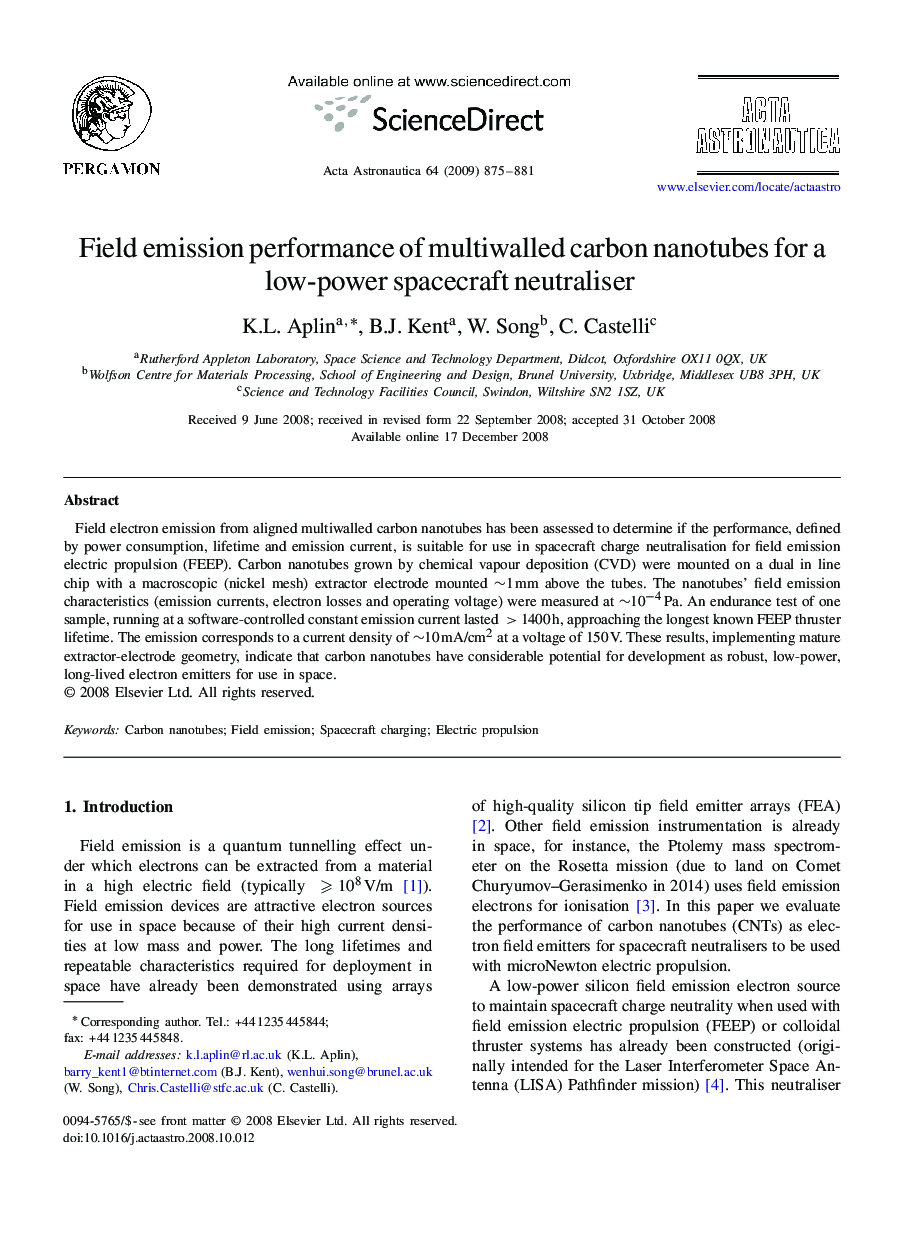| Article ID | Journal | Published Year | Pages | File Type |
|---|---|---|---|---|
| 1716604 | Acta Astronautica | 2009 | 7 Pages |
Field electron emission from aligned multiwalled carbon nanotubes has been assessed to determine if the performance, defined by power consumption, lifetime and emission current, is suitable for use in spacecraft charge neutralisation for field emission electric propulsion (FEEP). Carbon nanotubes grown by chemical vapour deposition (CVD) were mounted on a dual in line chip with a macroscopic (nickel mesh) extractor electrode mounted ∼1 mm above the tubes. The nanotubes’ field emission characteristics (emission currents, electron losses and operating voltage) were measured at ∼10−4 Pa. An endurance test of one sample, running at a software-controlled constant emission current lasted >1400 h, approaching the longest known FEEP thruster lifetime. The emission corresponds to a current density of ∼10 mA/cm2 at a voltage of 150 V. These results, implementing mature extractor-electrode geometry, indicate that carbon nanotubes have considerable potential for development as robust, low-power, long-lived electron emitters for use in space.
